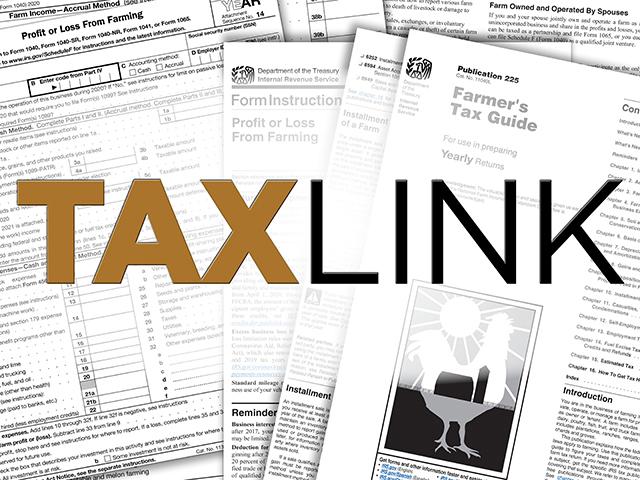Taxlink
When Can Farmers Deduct Prepaid Expenses?
With high crop prices and high input costs (especially this past November/December), understanding how prepaid expenses work is critical. I know many farmers do their own tax planning without realizing "prepaids" might be limited or disallowed. If audited by the IRS, this could be a costly mistake. Let's review what a prepaid is and how it might be limited or disallowed.
The deductibility of prepaid expenses is more difficult than most people think. There are several tests or requirements you must meet. What qualifies as a prepaid?
1. The expense must be an actual purchase. It can't be a deposit or credit. A revenue rule outlines the difference between a purchase and deposit by the indication that a deposit (a) does not indicate a specific quantity of the item purchased, (b) contains a right to refund any remaining credit, (c) is treated by the seller as a deposit on their books and (d) allows the farmer the right to substitute other goods or services for those purchased.
P[L1] D[0x0] M[300x250] OOP[F] ADUNIT[] T[]
2. The prepaid must be made for a business purpose and not for tax avoidance. This is easily met because of the year-end discounts and possible shortages or rationing of inputs (especially at the end of 2021).
3. The prepaid must not result in a material distortion of income. This can be tough to understand because of the factors listed in the revenue rule. However, to oversimplify, the prepaid must be used within 12 months of purchase.
4. Prepaids must not exceed 50% of deductible nonprepaid expenses for the tax year. Deductible expenses include ordinary and necessary business expenses, interest, taxes paid and deprecation. For example: A farmer has nonprepaid expenses totaling $600,000. During tax planning, he needs an additional $400,000 to reduce income. If he spent $400,000 on prepaids, we could only deduct $300,000 (50% of $600,000). The remaining $100,000 would be carried over to the next year.
Back in 2004, the IRS issued regulations that allow a farmer to prepay rent if it does not extend beyond 12 months. The prepaid rent is not subject to the 50% test, so it can be a tool to either increase overall expenses (increasing the amount that can be prepaid) or be used as a substitute for prepaid expenses.
There are two exceptions to the 50% test. The first exception is if there was a change in the farming operation because of extraordinary circumstances. The second exception allows the farmer to aggregate the preceding three years to determine if the 50% test was met. If the total prepaid for the preceding three years is less than 50%, the total current year prepaid expense would be allowed.
As you can see, prepaid expenses can be more difficult than anticipated. With high input costs, several of my clients didn't meet the current year 50% test. A more detailed analysis was required. And, in some cases, equipment purchases or rent was used to get income down to the desired amount.
**
DTN Tax Columnist Rod Mauszycki, J.D., MBT, is a tax principal with CLA (CliftonLarsonAllen) in Minneapolis, Minnesota. Read Rod's "Ask the Taxman" column at www.about.dtnpf.com/tax. You may email Rod at taxman@dtn.com.
(c) Copyright 2022 DTN, LLC. All rights reserved.




